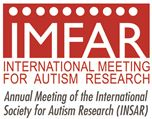


Today at the International Meeting for Autism Research (IMFAR), Harvard neurologist Mustafa Sahin discussed how clinical trials of experimental medicines for tuberous sclerosis have a unique potential for advancing treatments for many types of autism.
![]()
Read all our coverage of IMFAR 2016 here.
Tuberous sclerosis complex (TSC) is a rare genetic disorder that involves the early growth of non-cancerous tumors in the brain and body. Around half of children diagnosed with TSC go on to develop autism.
Dr. Sahin and his research team recently concluded a phase II clinical trial testing the ability of the anti-tumor drug everolimus to improve cognition and reduce symptoms of autism, epilepsy and disturbed sleep in children with TSC. A research grant from Autism Speaks helped fund the study, alongside support from the Tuberous Sclerosis Alliance and the healthcare company Novartis.
In news reports over the last three years, several families reported dramatic improvements in some of the 47 children with TSC and autism who participated in the study. Dr. Sahin cautions, however, that his team has only recently unmasked which children received the actual medicine and which received a look-alike dummy pill. Only now can they begin analyzing whether the medicine is associated with significant improvements in cognition and symptoms.
“It’s so important to do double-blinded studies like this,” he explains, “because we know that open-label trials give us higher rates of optimistic results that can’t always be replicated.” In other words, blinding a trial helps researchers factor out the positive effect of expectations – both theirs and those of participating families.
At IMFAR this week, Dr. Sahin was able to report that the children in the study experienced very low rates of possible side effects – an important indicator that everolimus is safe and well tolerated.
Gaining new insights from clinical studies
At the heart of Dr. Sahin’s IMFAR presentation were his recommendations for improving future clinical testing of everolimus and other experimental medicines for autism.
In particular, he recommended the use of brain imaging (MRI) and high-tech analysis of electroencephalography (EEG) to track how experimental treatments change physical brain structures. In his research with tuberous sclerosis, for example, such methods would allow researchers to track changes in the altered brain connections frequently seen with tuberous sclerosis and some other types of autism.
Such brain-structure changes may prove to be important indicators of when a treatment is helping or is likely to help someone who has tuberous sclerosis and/or autism. “Our goal is to identify whether there are other subtypes of autism that involve alterations to the same pathways – and so may also benefit from the same treatments,” Dr. Sahin says.
Indeed, one of the major unanswered questions in autism research is which brain regions and which types of brain cells are involved in the condition, experts agree. Brain imaging and EEG analysis promise to provide important insights in this area, Dr. Sahin suggests.
In recent years, he notes, whole genome sequencing has associated autism with upwards of a thousand different genetic changes. This has fostered interest in finding whether some or many of these different gene changes affect common brain pathways – and so, may respond to the same or similar treatments.
Ensuring that each clinical trial builds on the last one is the best way to advance the development of autism medicines, Dr. Sahin concludes. “We will likely go through this circle of discovery several times to come up with safest and most effective medications for tuberous sclerosis and other forms of autism. It will take a number of trials, each one giving us better and better results as we go forward.”
Dr. Sahin also credited studies in animal models of autism for contributing to “crucial insights into how to develop better therapies.” By way of example, he noted that Autism Speaks Preclinical Autism Consortium for Therapeutics (PACT) is supporting the improvement of animal models and other tools for early testing of promising medicines.
In closing, Dr. Sahin expressed confidence that within the next decade, basic research and clinical trials will together deliver an effective medicine to ease the core symptoms of at least some types of autism.
Read Dr. Sahin’s IMFAR abstract – “Clinical Investigations in TSC” – here.
For more on Dr. Sahin’s research, also see
“Progress report on precision therapies for autism.”
Photos from IMFAR 2016 below.
